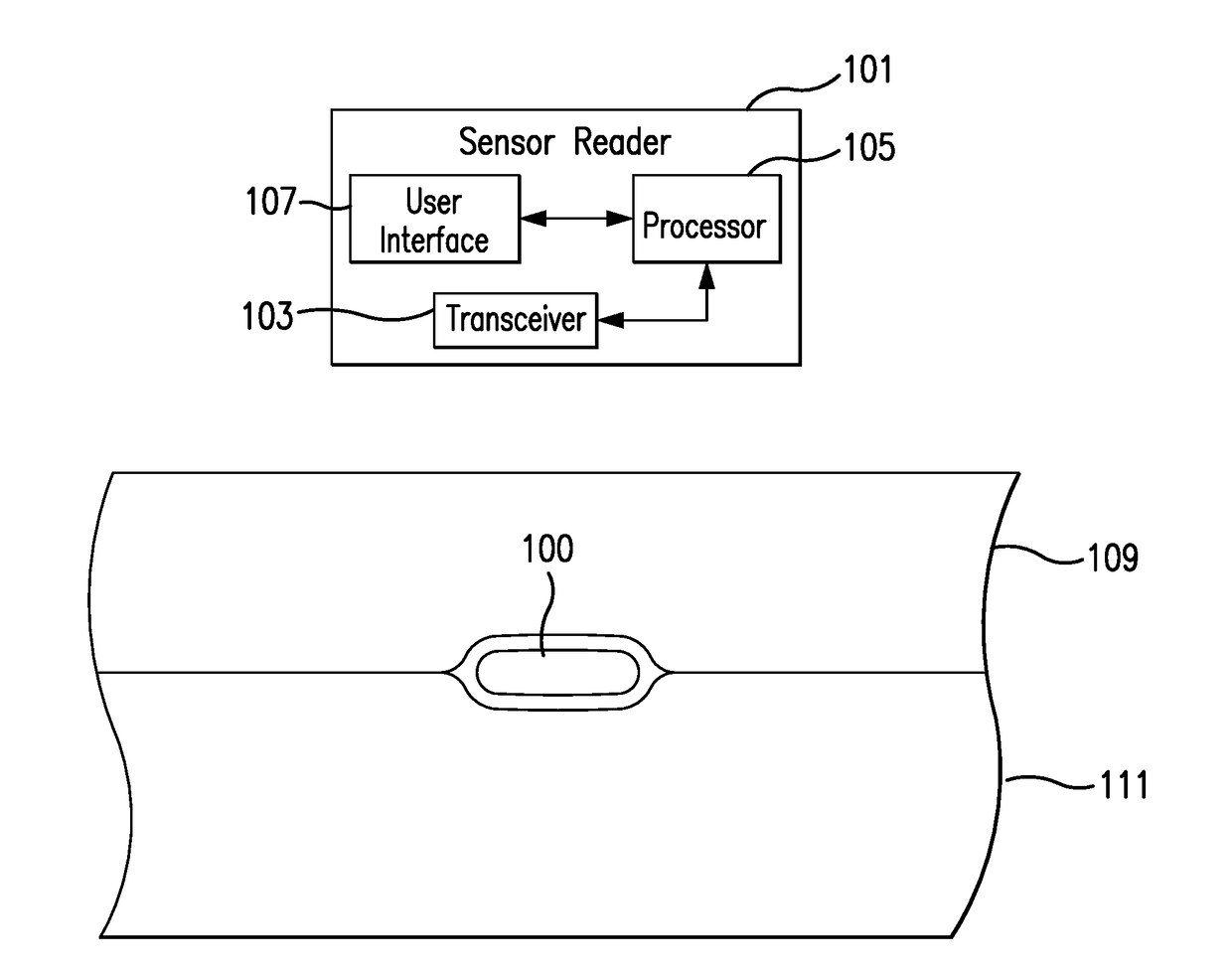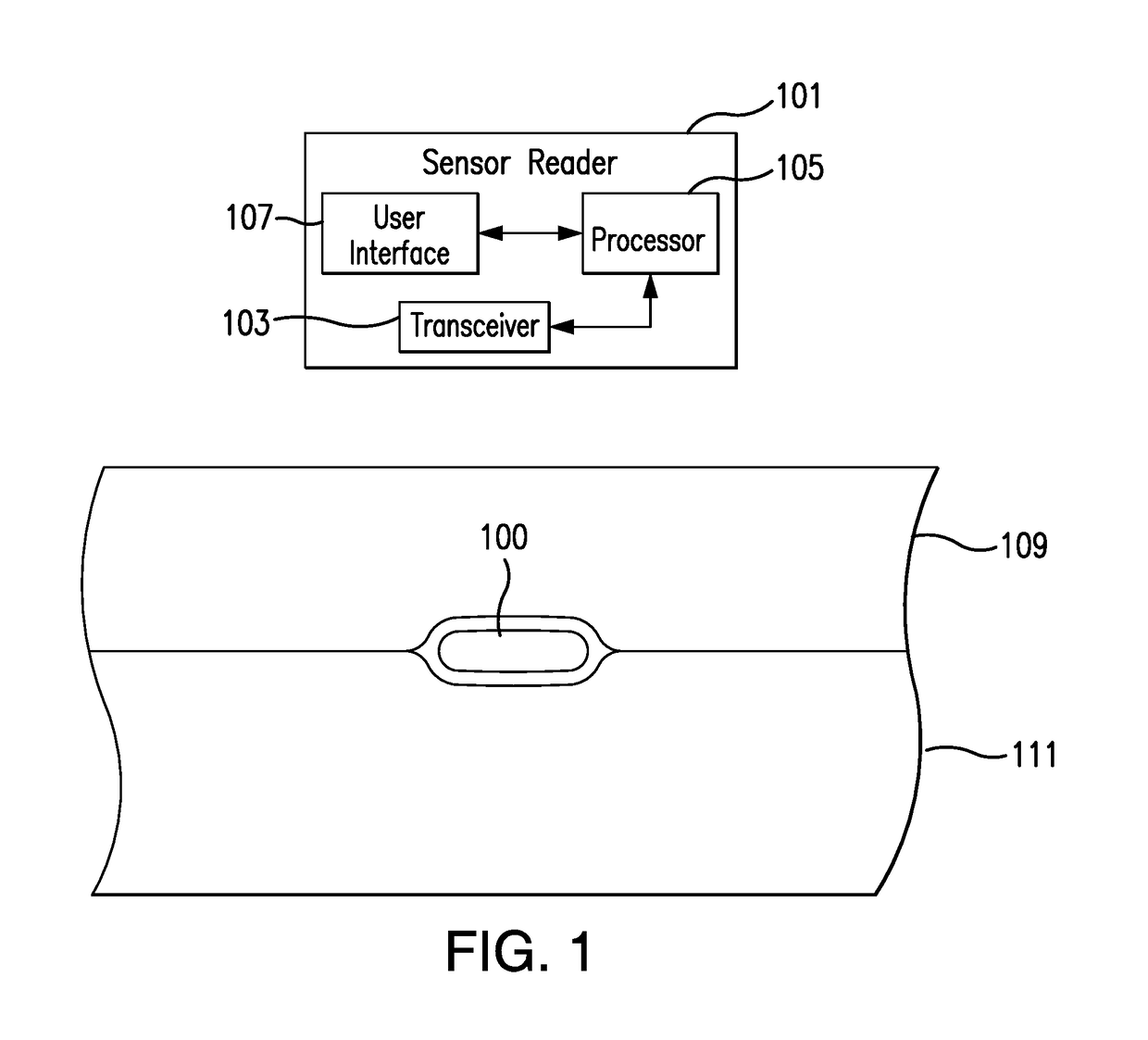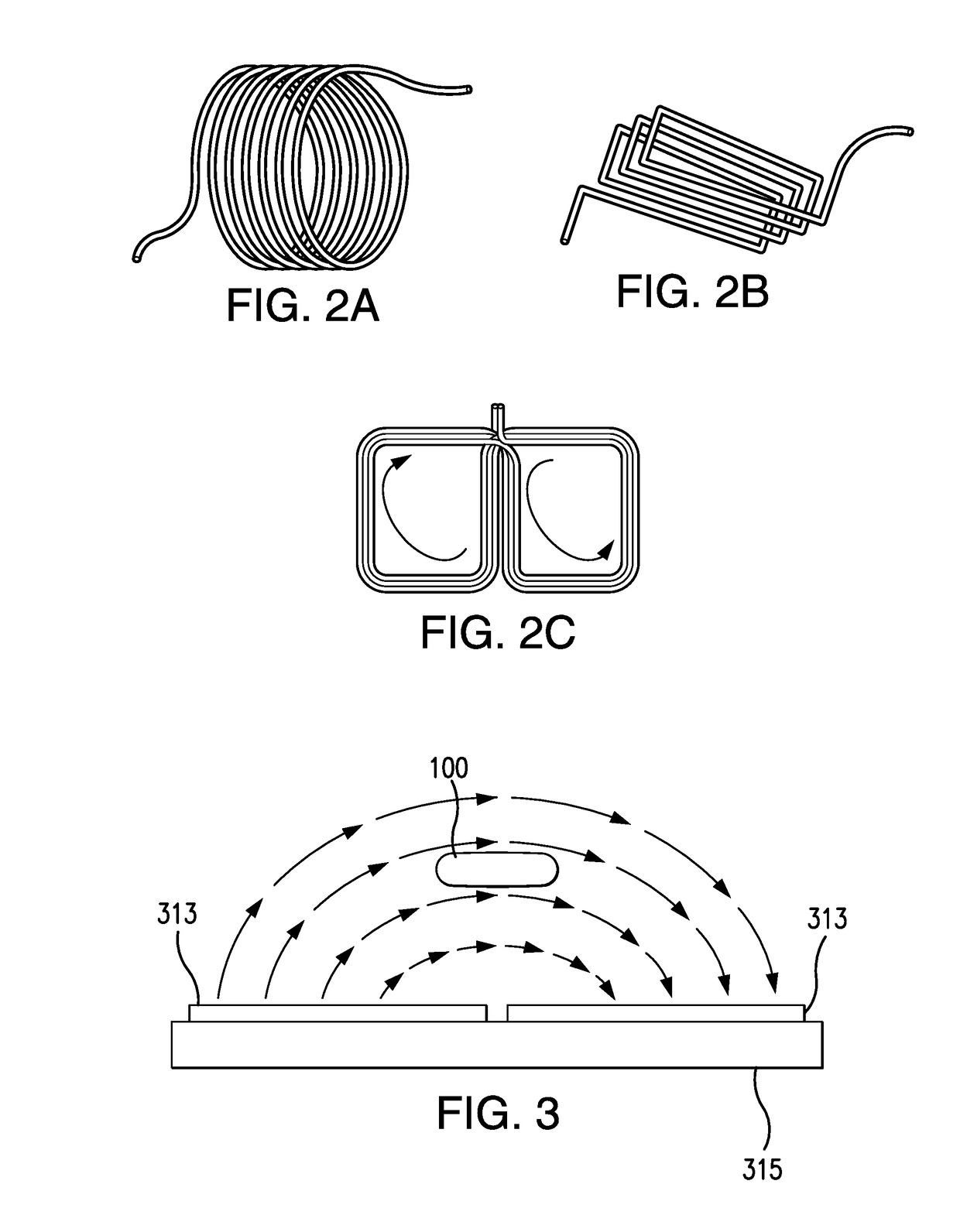Electrodynamic field strength triggering system
a technology of electrodynamic field and triggering system, which is applied in the field of electrodynamic field strength triggering system, can solve the problems of insufficient field strength range, inability to achieve the correct alignment, and difficulty in finding the correct alignment, so as to reduce the action required and achieve the effect of sufficient field strength rang
- Summary
- Abstract
- Description
- Claims
- Application Information
AI Technical Summary
Benefits of technology
Problems solved by technology
Method used
Image
Examples
Embodiment Construction
[0050]FIG. 1 is a schematic view of a sensor system embodying aspects of the present invention. In one non-limiting embodiment, the system includes a sensor 100 and an external sensor reader 101. In the embodiment shown in FIG. 1, the sensor 100 is implanted in a living animal (e.g., a living human). The sensor 100 may be implanted, for example, in a living animal's arm, wrist, leg, abdomen, or other region of the living animal suitable for sensor implantation. For example, as shown in FIG. 1, in one non-limiting embodiment, the sensor 100 may be implanted between the skin 109 and subcutaneous tissues 111. In some embodiments, the sensor 100 may be an optical sensor. In some embodiments, the sensor 100 may be a chemical or biochemical sensor.
[0051]A sensor reader 101 may be an electronic device that communicates with the sensor 100 to power the sensor 100 and / or obtain analyte (e.g., glucose) readings from the sensor 100 on demand. In non-limiting embodiments, the reader 101 may be ...
PUM
 Login to View More
Login to View More Abstract
Description
Claims
Application Information
 Login to View More
Login to View More - R&D
- Intellectual Property
- Life Sciences
- Materials
- Tech Scout
- Unparalleled Data Quality
- Higher Quality Content
- 60% Fewer Hallucinations
Browse by: Latest US Patents, China's latest patents, Technical Efficacy Thesaurus, Application Domain, Technology Topic, Popular Technical Reports.
© 2025 PatSnap. All rights reserved.Legal|Privacy policy|Modern Slavery Act Transparency Statement|Sitemap|About US| Contact US: help@patsnap.com



